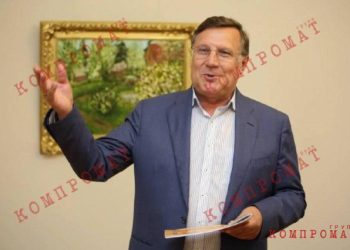Not so long ago, Gulzhana Karagusova, a deputy of the Majilis of the Parliament of Kazakhstan, made a request to the Prime Minister, in which she recalled that in 2016 a new system of remuneration of state employees was introduced in the country and, according to it, the salaries of doctors were to increase by 28%, and workers of education and science – by 29%. However, the promised growth did not materialize.
According to Gulzhana Karagusova, in 2016 the real income of teachers increased by only 6.4% compared to 2015, and in 2017 it decreased by 4.4%. For doctors, the situation is even worse: in 2016, the increase happened only by 0.7%, and in 2017 there was a decrease by 4.3%. Social workers receive only 26,000-40,000 tenge, – the deputy was indignant, who, by the way, was the Minister of Labor and Social Protection of Kazakhstan in 2001-2007.
Karagusova took these sad figures from the payrolls of the Nurly Zhurek Astana social service center. A nurse there receives 30,924 tenge, an assistant teacher – 28,247 tenge, kitchen workers – 27,390 tenge. “It’s impossible to live on that kind of money!” – I am sure the deputy and ex-minister. And she’s right – at best, this money will only be enough to pay for utilities, or for two trips to the grocery store.
So what is happening in reality with wages in Kazakhstan? To understand this issue, we decided to analyze the salaries of different categories of workers.
White salary – black tears
So, the average salary in Kazakhstan in December 2017 was 168,220 tenge, and the minimum wage established for 2018 was 28,284 tenge (a six-fold difference between them).
For example, in England last year the minimum wage was £1,300 and the average was £2,310, a difference of 1.7 times. In Australia – 2128 US dollars “minimum”, 4170 – the average, the difference is 1.9.
Now let’s look at quite real salaries in the Almaty vocational college (former vocational school). According to the accounting department, a teacher with 25 years of experience is credited 132,600 tenge per month, of which 8,200 tenge is deducted from the IIT (individual income tax), 13,200 tenge pension contributions, 1,300 tenge trade union fees, 245 tenge party contributions to Nur Otan (significant part of the state employees became members of the ruling party automatically). 109,000 tenge is issued on hand. Previously, there was also an additional payment for the category, but then it was canceled for college teachers, and the money paid “illegally” was gradually deducted from salaries.
Approximately the same figures will appear in the statement of the head teacher of the college and even the director: he has a salary of 110,000 tenge, he can take hours (that is, teach) only part-time – it is no longer possible, and as a result, his official salary will be 130,000 tenge. A teacher with five years of work experience and the second category has a rate of 93,000 tenge, plus 9,900 allowances for checking notebooks and class management, minus taxes (16% = 10% – pension, 6% – income) gets about 90,000 tenge on hand. Only a teacher who came after the university will receive about 70,000 tenge.
Approximately the same figures were given by a secondary school teacher from the regional center. The director’s salary is about 100,000 tenge, and a young teacher comes to a salary of 60,000: a rate of 40,000 tenge, one and a half rates – 60,000 plus allowances for class management (5,300 tenge), checking notebooks (3,000), for decorating an office (5,000 tenge) and minus taxes. The rate of a teacher with the highest category and 18 years of experience is 80,000 tenge, one and a half rates – 120,000, plus an office, notebooks, a class, minus taxes – 112,000.
According to teachers, their colleagues earn the most in the centers of pedagogical excellence – the “engines” of the updated education system, where the salary reaches 300,000 tenge.
Can a teacher work “on the side”? Yes, but again with reservations. Tutoring is available only to experienced subjects, mainly specialists in mathematics, physics, a foreign language, preparation for school. Additional classes, say, in biology or, even more so, physical education or technology (former labor) are not needed by anyone. In order to get a not at all extra penny, teachers (like doctors) often get involved in network marketing like Oriflame, start making soap for sale, knitting or sewing.
Official data on salaries basically correspond to the actual ones: at the beginning of the year, the average monthly salary of an education worker was 99,000 tenge. The salary of a teacher at school is 108 thousand tenge, a university teacher – 113 thousand.
All shades of bureaucratic salaries
There are even fewer opportunities to earn extra money with officials (except for possible corruption proceeds). And the salaries of the lower level civil servants are small.
In general, their wage system is quite complicated. The salary consists of an official salary, a multiplier, additional payments and allowances, health benefits, compensations, etc. The size of these components depends on the place of the civil servant in the multi-level classification.
In Kazakhstan, all officials are divided into corps, groups of categories, categories, etc. For example, an expert of the presidential administration is category A-3, an assistant to a deputy of parliament is B-5, the head of a branch of the National Bank is C-O-4, and the category ER-3 is assigned to the head of the sector of the district akimat.
An example of a vacancy from the website of the Ministry of Finance: the head of the internal control methodology department of the accounting and audit methodology department is required, category C-3, salary from 154,071.85 to 208,205.20 tenge. The C-4 category has lower salaries: from 138,248.25 to 186,551.86 tenge.
If you go down to the level of the rural akimat, then the salary figures will also drop significantly: for a leading specialist of the E-5 category, from 69,124 to 93,276 tenge. An ordinary specialist has a salary of 52,000.
But you need to understand that this is only a salary, to which various surcharges go. That is, the above figures cannot be considered salaries, this is the starting point on which bonuses are “wound up”. For example, the coefficients for recovery range from 0.95 to 4.14 of the salary, that is, the annual increase can be 4 salaries. And on a monthly basis, the salary is usually “corrected” with the help of a coefficient – double, triple, etc. For example, a candidate for the vacancy of a leading specialist in the UAPF was offered the following scheme: for a trial period – a “bare” salary of 100 thousand tenge, then a multiplying factor of 2 plus bonuses in the amount of salary for all holidays is applied.
By the way, MP Gulzhana Karagusova considers the meager base salary to be the reason for teachers’ low salaries. Its size has not changed for 7 years and is 17,697 tenge, which is not only lower than the minimum wage, but even the subsistence level established in Kazakhstan (28,284 tenge) by almost 40%.
Shades of gray and black
Now let’s move on from “white” patches “to” gray, “in envelopes.” Take for example a medium-sized service station operating in the city center and designed for “middle class” customers. Workers there receive 50% of the cost of the order after deducting the cost of materials and spare parts spent. An ordinary auto mechanic earns 200-250 thousand tenge per month, depending on the season. Painters who cost 30 thousand to paint 1 part “raise” about 300,000.
According to the calculations of employees, the owner of a service station has from a million to one and a half monthly. Typically, such a business to reduce taxes is formalized as an individual entrepreneur (individual entrepreneur) with a couple of employees at the minimum wage.
Another example is a large beauty salon located in a busy place. The average check is 5000 tenge. More than 30 people go to work per shift: hairdressers, manicurists, cosmetologists. The conditions are as follows: there are no salaries, the owner of the salon and the people working in it share the income from customers 50 to 50, but in fact the employee has much less left, since he buys the tools (scissors, nail files, combs, etc.) himself and is obliged pay 500 tenge daily for cleaning the workplace and the common kitchen.
The cost of many consumables (varnishes, paints, gels) is deducted from the employee’s money. Therefore, as a rule, hairdressers manage to earn the most: there are fewer consumables, and cutting and dyeing hair is an all-season business. As a result, they can earn about 200,000 tenge per month. The rest are much less – 90000-100000 tenge.
The salon functions as an individual entrepreneur with the maximum allowable number of employees – 24, of course, at the minimum wage. How the rest of the employees work is not difficult to guess.
The highest paid worker in Kazakhstan is likely to be football player Andrey Arshavin, with a salary of $120,000 per month, or 38.4 million tenge at a rate of 320 tenge to the dollar.
In general, it is no secret that in Kazakhstan, apart from state-financed institutions, only very rich private companies can afford to hire “in a white manner”, because for each salary the company needs to pay approximately the same amount to the state in the form of taxes. Large “white” salaries – from 300 thousand tenge to 3.3 million – in Kazakhstan are received in foreign or joint ventures, oil companies, banks, etc.
Unemployment: white, gray, black
What is the conclusion from the above examples? It seems that the official average nominal wage of 150,000 tenge is not that far from reality. It is simply not clear how it is calculated, if a quarter of the working-age population, even according to official statistics, are self-employed with unknown incomes.
“According to the Statistics Committee of the Ministry of National Economy of the Republic of Kazakhstan, today 9 million people out of 13 million of the adult population in the country are able-bodied. Of these, 70% are employees, 24.5% are self-employed, and 5.5% are unemployed.”
And according to the Atameken Chamber of Entrepreneurs, the picture looks somewhat different.
“We conducted a pilot project to screen the population and SMEs of the district centers of Saryagash (Saryagash city), Maktaaral districts (Zhetysay city). The results showed a fivefold difference in the number of unemployed people between official statistics and screening results. 89% of the unemployed receive shadow income, more 2156 – not registered entrepreneurs. In general, entrepreneurs provide jobs 4 times more workers than the statistics show,” said Eldar Zhumagaziyev, Deputy Chairman of the Board of Atameken National Entrepreneurship of the Republic of Kazakhstan, speaking at an expanded board of the Ministry of Labor and Social Protection of the Population.
This five-fold difference can explain the paradox between official statistics and real life, when, with salaries of 250-300 dollars, Kazakhstanis afford to buy the latest iPhones (even on credit), gold jewelry (even if they are “bazaar”), cars (even if and not new) and hold crowded toi (holidays).
It is these “joys of life” that commentators on social networks stubbornly point at when it comes to poverty in Kazakhstan. And no one cares that these same “spenders”, in fact, do not have the opportunity to pay for the most common things for a Western country: the education of children, vacations abroad, healthy eating, sports, not to mention buying their own housing. Maybe they buy iPhones on credit – in order to at least feel closer to a prosperous life.









